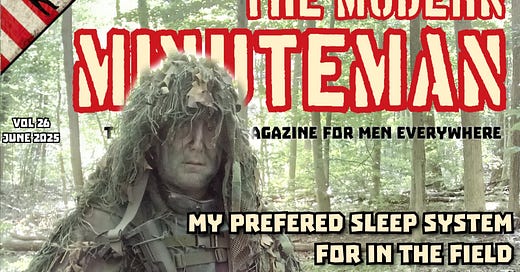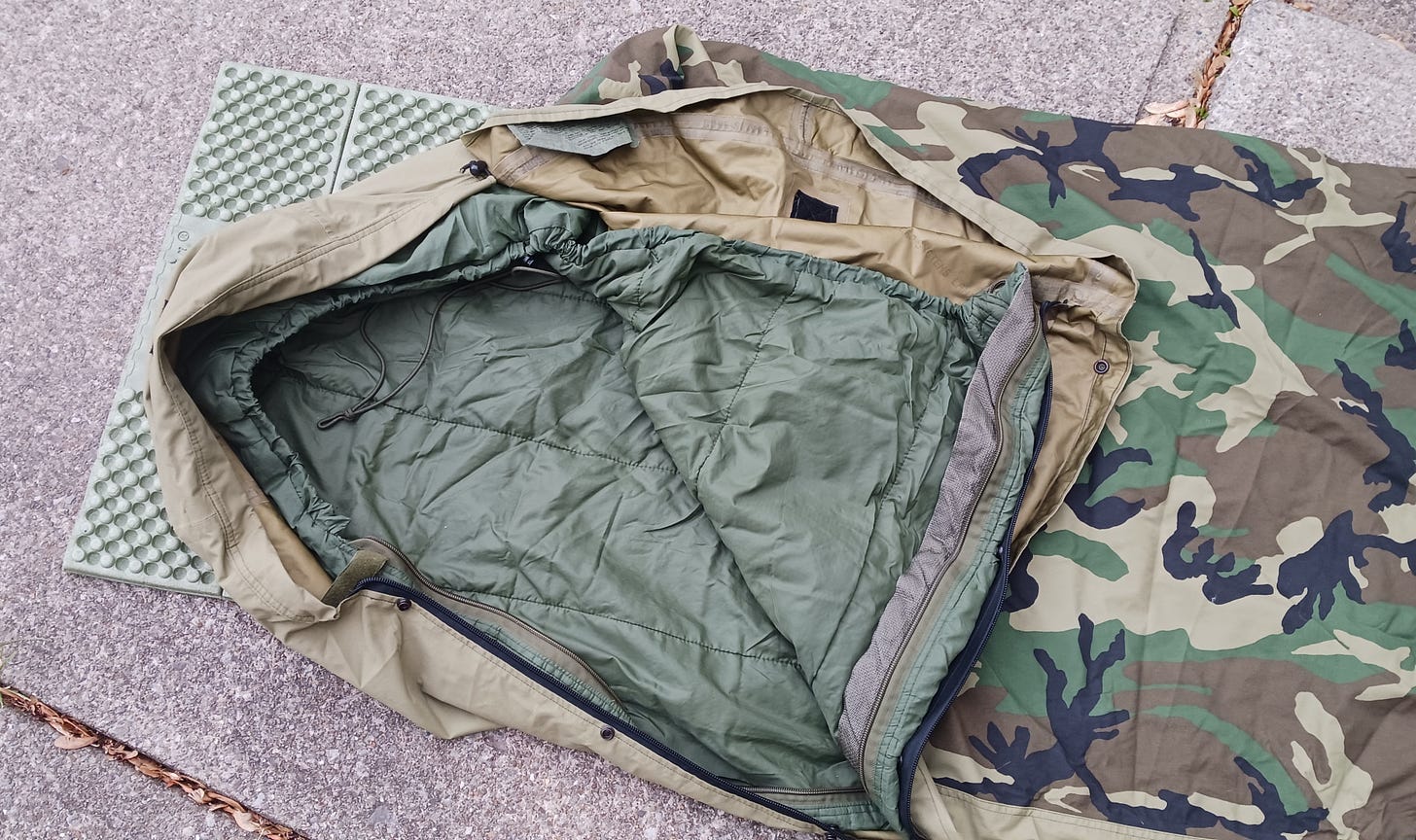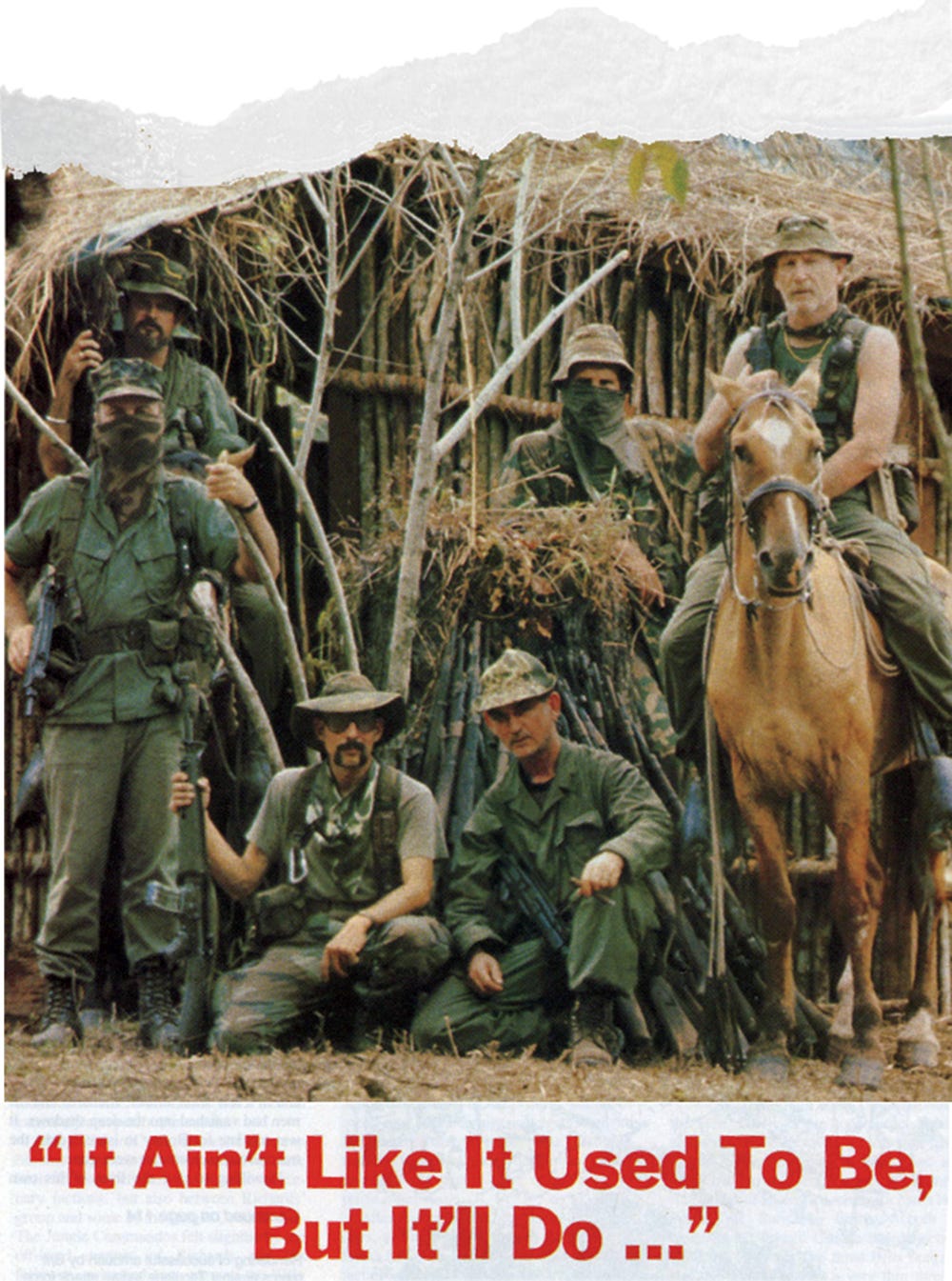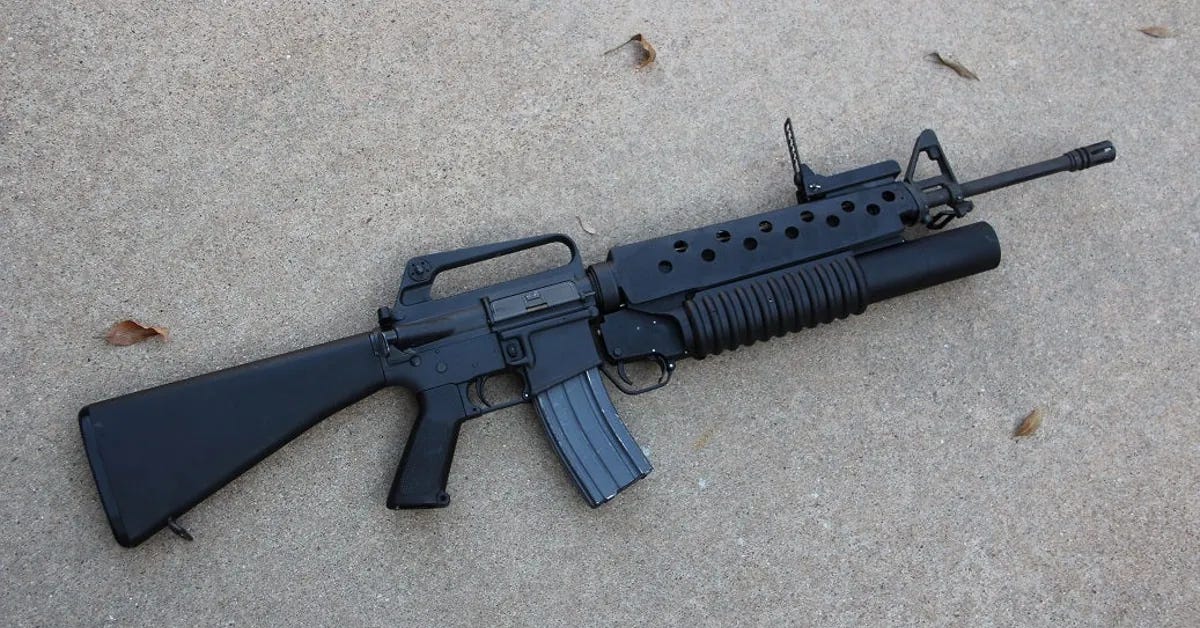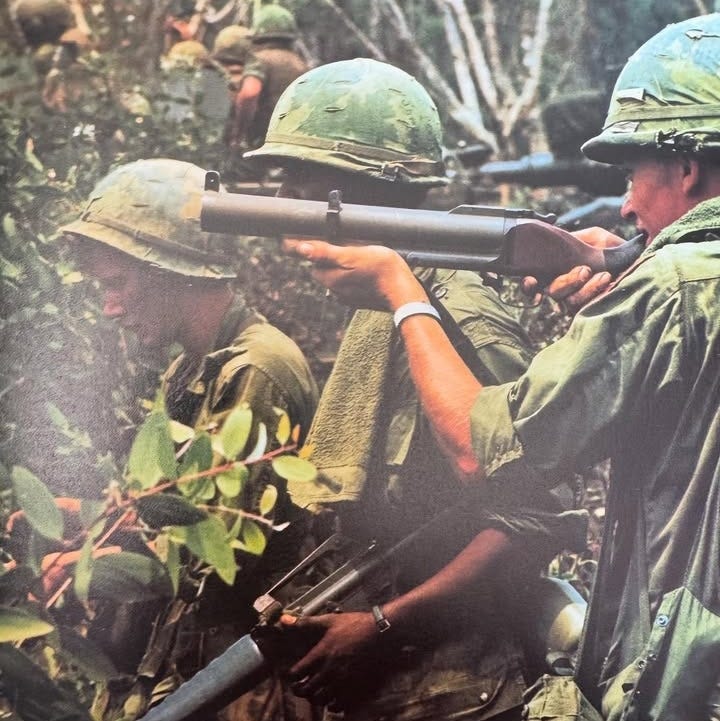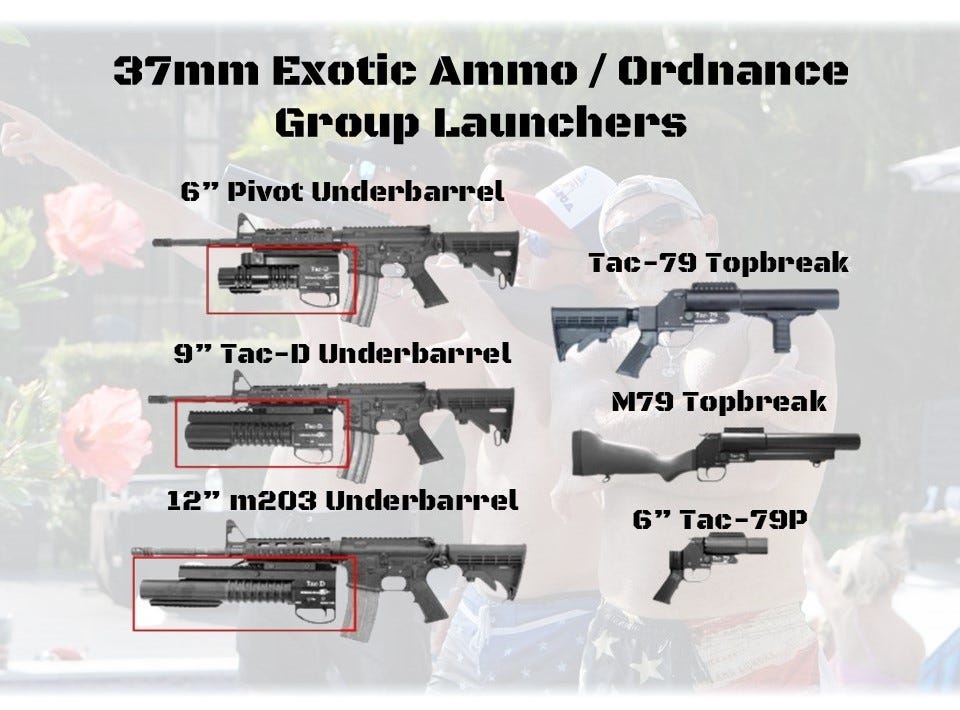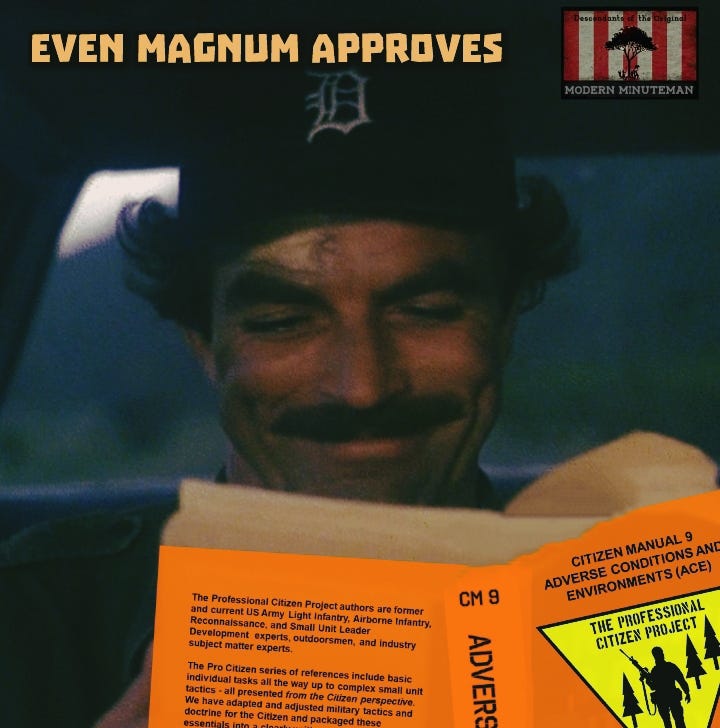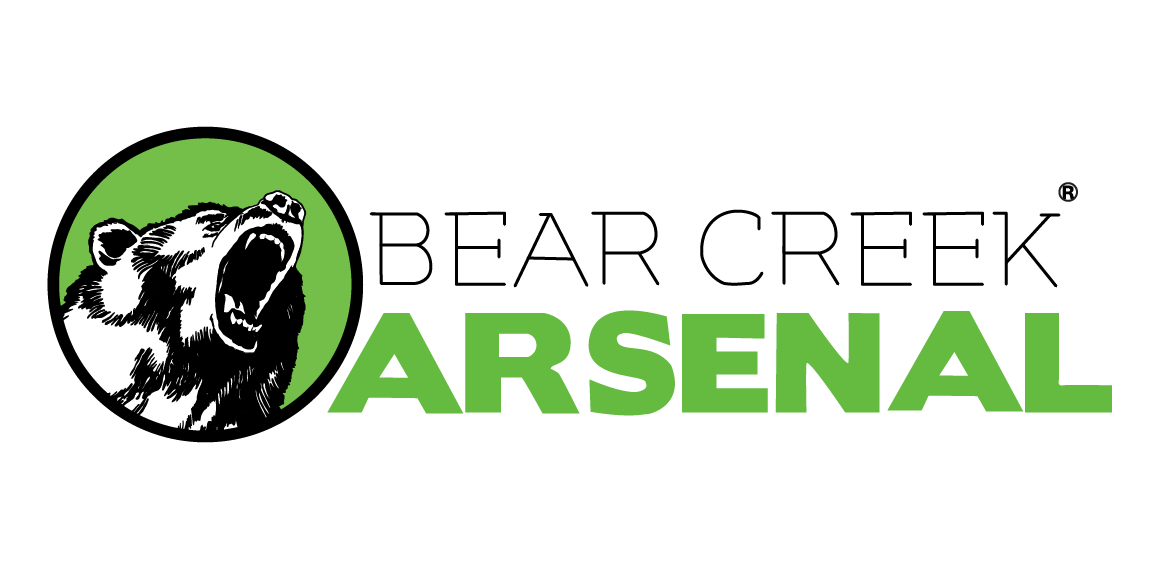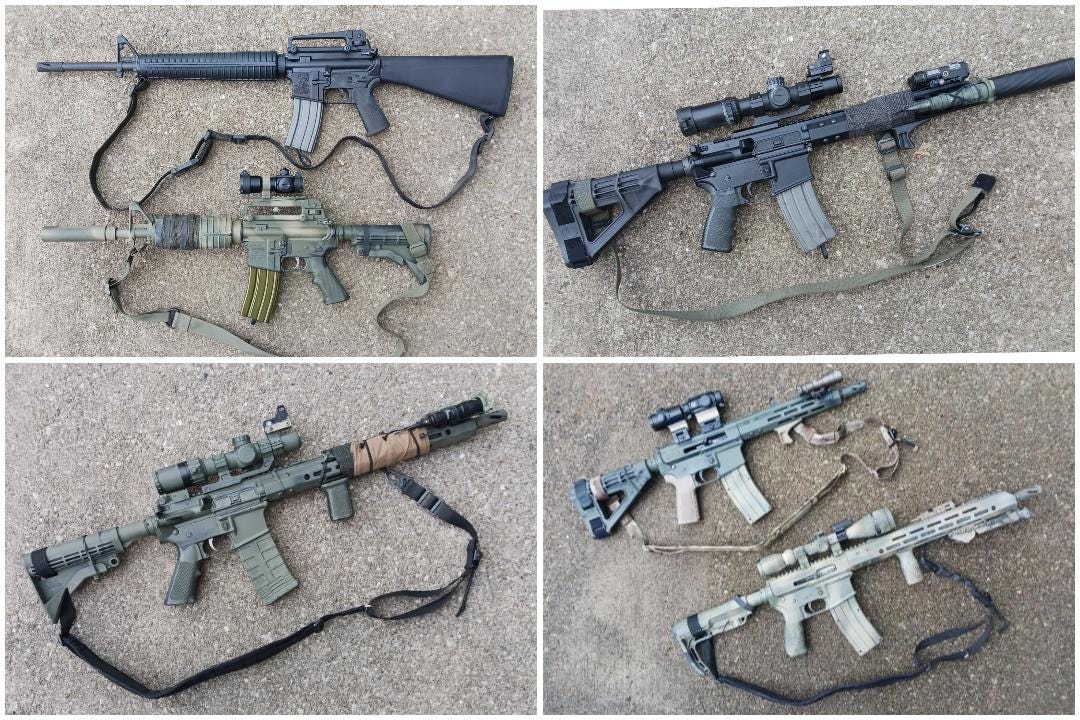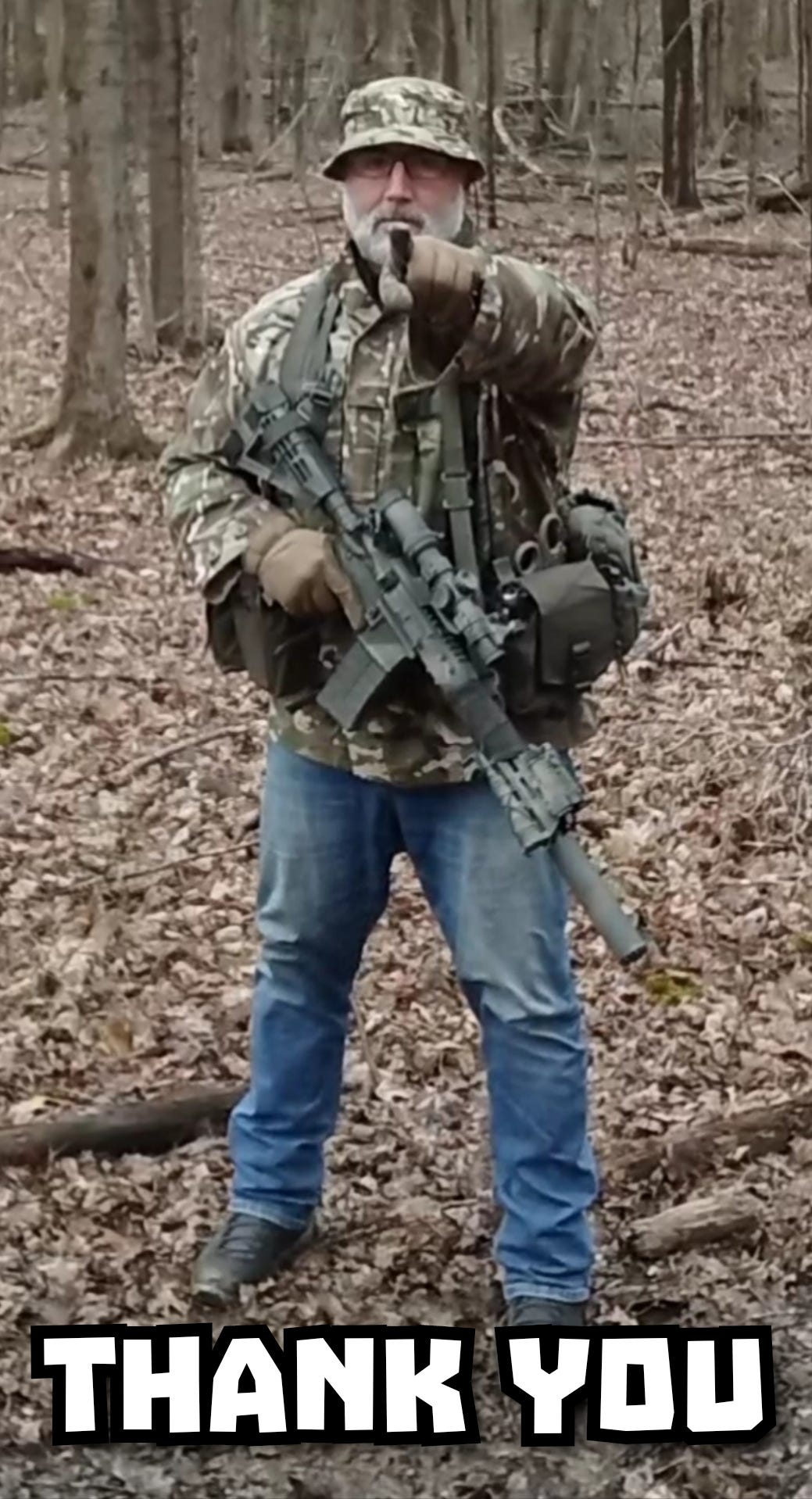THE MODERN MINUTEMAN Volume 26, June 2026
Sleeps Systems, The Minuteman M203, Bear Creek Arsenal, and Project DELTA...
My Preferred Sleep System
For in the field I like to keep it as simple and effective as possible. When sleeping in the field we have to keep in mind that we aren’t on a Boy Scout camping trip, you shouldn’t be expecting to get 8 hours of peaceful sleep. At the most you will get a few hours of shut eye.
I have grown to really like the simplicity of the MSS system and I find myself using the GTX Bivy with either the green Patrol Bag or just a poncho liner or Swagman Roll for insulation along with a folding foam pad.
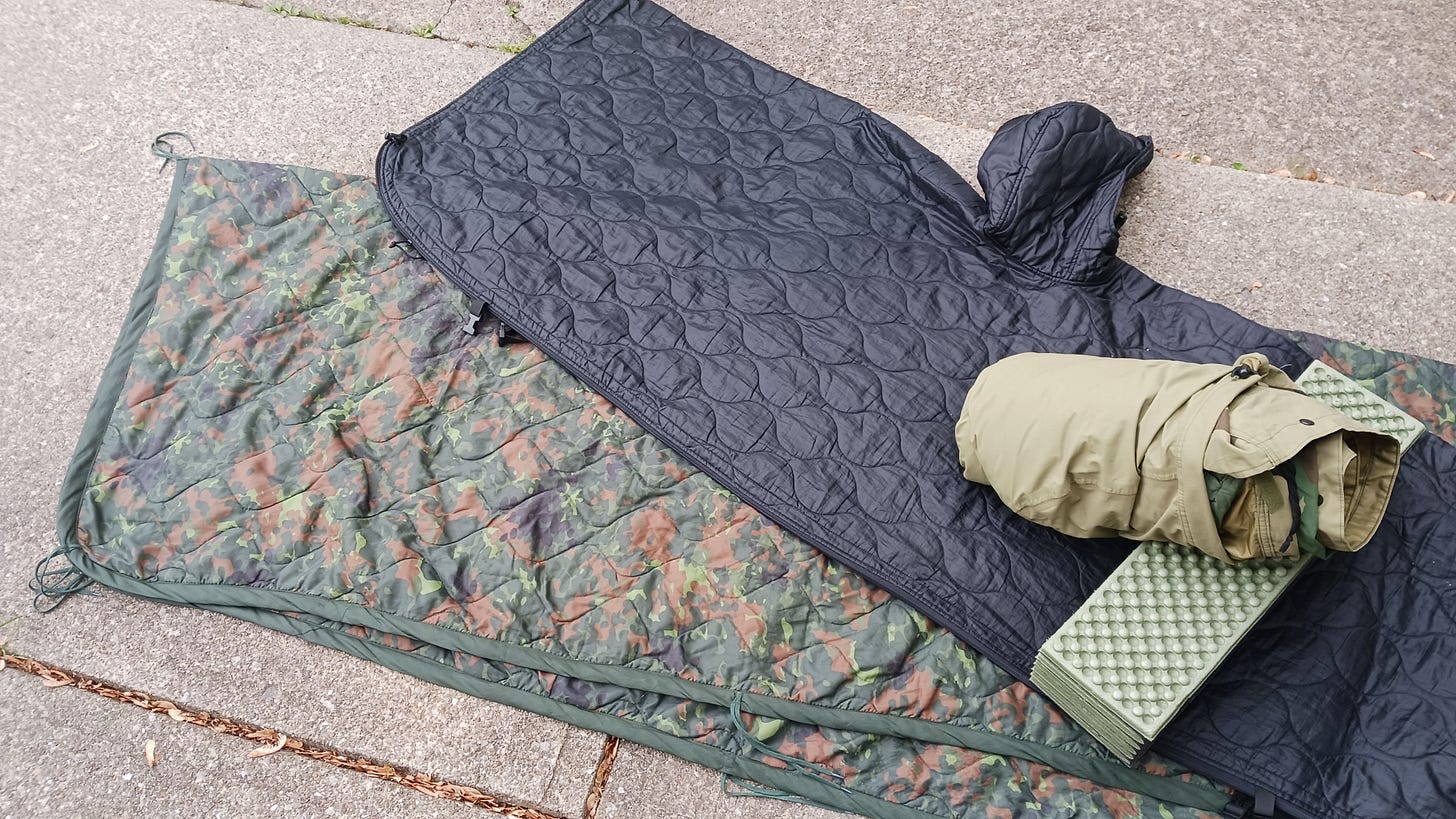
It is quick to deploy and quick to put away and when combined with a poncho or tarp shelter can be a very effective in a wide variety of conditions. I can sleep comfortably (there are various levels of comfort I suppose) down to 30 degrees with th bivy/patrol bag combo and into the teens by adding a poncho liner or Swagman roll. In the heat of summer I can do the bivy with poncho liner or in rare cases just use a poncho liner with a poncho. The point of this is to encourage you to get out into the field and test what works (and doesn’t work) FOR YOU. You’ll be glad you put in the time to figure it out.
***Stay tune for a seperate follow up article on this topic***
The Minuteman M203
Understanding the Difference between 37mm vs 40mm
One is for the party… and the other, is “all business”…
Let’s start off with the 37mm… The 37mm launcher has a rich history, dating back to World War II when it was primarily used as an anti-tank gun and signaling device by various military forces. Its versatility and effectiveness in signaling and light artillery roles made it a valuable tool on the battlefield. Over the years, 37mm has evolved from a military tool to a sought-after item among collectors, emergency services, hobbyists, and firearms enthusiasts. Its storied past and adaptability have cemented its place in the history of signaling and ammunition.
Transitioning from military to civilian use, the 37mm launcher has found a new life as a signaling device for emergency services, wildlife control, entertainment, and use in sporting events. The signaling device options available in 37mm offer a variety of signaling rounds, including flares and smoke rounds, making it a versatile tool for communication and signaling in various contexts.
The 40mm launcher, has been a pivotal part of armaments since its introduction in the mid-20th century. Initially designed to bridge the gap between grenades and mortars, its storied past includes extensive use in conflicts where the need for a medium-range, high-impact weapon was paramount. The 40mm grenade launcher first saw widespread use during the Vietnam War, where it proved invaluable in jungle warfare, allowing soldiers to engage targets in dense foliage with greater accuracy and firepower than traditional hand grenades.
Its development marked a significant advancement in infantry weapons, providing the soldiers and later on, law enforcement officers, an unparalleled ability to deliver a variety of munitions. This adaptability made the 40mm a mainstay in the arsenal of the army chiefs and a frequent topic of military ordnance groups. Over time, the design of the 40mm launcher has evolved to meet changing military needs. Early models like the M79 “blooper” (or “thumper”) were standalone weapons, while later versions such as the M203 were designed to be mounted under the barrel of assault rifles, increasing a soldier’s versatility in combat situations. Modern 40mm launchers have incorporated advanced materials and ergonomic designs, improving their accuracy, reliability, and ease of use in various combat scenarios.
Legalities
As a reminder, 37mm launchers are exempt from the National Firearms Act of 1934 and do not need to be registered with the ATF. This remains the case as long as it is not being used as a “destructive device”. Rounds considered to be “destructive” would be wood pellets, bean bag rounds, or other anti-personnel rounds. If a user would like to use a launcher in this capacity, the launcher would need to be registered with the ATF and a serial number (ATF provided) engraved on the side (this is not a difficult process)
37mm, as a signaling device, was originally used for military purposes back in World War 2. The 37mm in a weapon capacity, was used as far back as World War 1. Our focus will be on its signaling capabilities.
Courtesy of Exotic Ammo
So this now begs the question, is there a place for the 37mm launcher in the Modern Minuteman’s vast box of tools?
I think there is and here is why…
Marking a target or target area
Creating a distraction/disruption for evasion and/or movement
Signaling purposes
Animal control ;)
Illumination
Hand thrown smoke, flares, and distraction devices can only be thrown so far. Sometimes you may need to put smoke way over there or light up an area 50 to 100 yards away. A 37mm launcher was designed to do just that.
In the Prepared Citizen/Modern Minuteman realm, we won’t necessarily have an assigned “Grenadier” role to fill, but having some of the capabilities of a Grenadier could be a small force multiplier. I’ll leave it up to you to decide if this tool can help your group out or not.
Shop all 37mm launchers and ammo here at: https://exoticammo.com/
Use discount code MINUTE10 and save 10% on your order from Exotic Ammo!
***Stay tune for a seperate follow up article on 37mm launchers and their usage in the field for the Modern Minuteman***
Shoppable links to the companies above:
Project Delta
First a little history…
Project DELTA was the first of the Reconnaissance Projects, which were special reconnaissance (SR) units named with a Greek letter. The Reconnaissance Projects were formed by the U.S. Military Assistance Command, Vietnam (MACV) during the Vietnam War to collect operational intelligence in remote areas of South Vietnam.
Project DELTA was established at Nha Trang in 1964 and consisted of six reconnaissance hunter-killer teams each composed of two United States Special Forces (USSF) and four Army of the Republic of Vietnam Special Forces (LLDB) and later supported by the 91st Ranger battalion. It was designated Detachment B-52, 5th Special Forces Group.
Mission
DELTA's mission included operational and strategic reconnaissance into long-held Viet Cong areas and the direction of air strikes on them. They were also to conduct bomb damage assessment, conduct small scale reconnaissance and hunter-killer operations, capture and interrogate VC / NVA, tap communications, bug compounds and offices, rescue downed aircrew and prisoners of war, emplace point minefields and other booby traps, conduct psychological operations, and perform counter-intelligence operations. They were to focus on base areas and infiltration routes in the border areas.
History
DELTA originated as LEAPING LENA which was established on 15 May 1964 in order for the USSF to train LLDB teams for missions in Laos. During LEAPING LENA, five teams of eight LLDB soldiers were parachuted into Laos but only five men survived the experience. The US did not participate. On 12 July 1964 a US Special Forces B-Team (B-110) and an A-Team (A-111) from the US 1st Special Forces Group arrived to take over the mission. By October 1964 LEAPING LENA was re-designated Project DELTA with USSF in control and serving alongside LLDB in actual operations. DELTA can trace its roots from the WW2 "Black Devils", a US/Canadian joint special operations unit. The main base for Project DELTA was established at Nha Trang with half of the A-team at Dong Ba Thin Base Camp to train the 91st Ranger Battalion.
Helicopter insertions and extractions were particularly complex and dangerous. As a result, Delta's senior NCOs devised multiple methods of extraction including ladders and the McGuire rig (named after Sergeant Major Charles T. McGuire). The STABO rig, later developed by SOG, was also incorporated.
Project DELTA ceased operations on 30 June 1970, prior to the establishment of "Operation Blue Light", a unit within 5th SFG (Mott Lake Fort Bragg NC), which was the precursor to the modern Delta Force.
Organization
By 1966, Project DELTA consisted of the following:
Headquarters Section consisting of 31 US Special Forces and over 50 South Vietnamese Special Forces
Recon Section consisting of 12 Recon teams (RT), made up of two USSF and four South Vietnamese Special Forces.
Roadrunner Platoon consisting of six and then later twelve five-man CIDG (Civilian Irregular Defense Group program) teams.
A Security Company consisting of 124 Nungs.
Bomb Damage Assessment Platoon consisting of four US and 24 Nungs; in 1968 the Nungs became the Primary Immediate Reaction force when Recon Teams were compromised.
A 200+ civilian work force was based at the Nha Trang base camp and elements of it would accompany DELTA when it traveled to establish Forward Operating Bases (FOB).
MIKE Forces (Mobile Strike Force Command) were battalion and then brigade size reaction forces assigned to aid in case of hostile action but also conduct economy of force operations. Project DELTA's MIKE Force was the 91st Ranger battalion.
The above history is courtesy of Wikipedia
Hold up Jay, just where are you going with this “Project Delta” stuff?
So this years SERE Challenge, being put on by Grunt Proof, is a MACV-SOG inspired exercise pitting OPFOR and BLUFOR groups against one another! We are calling it PROJECT DELTA as a throwback to the original.
I will be part of Recon Team Blackhorse along with Josh from Modern Frontiersman, Jay from Prepared Citizens, and Paul from Task Force 41! Our 4-man team is tasked with conducting an Area Reconnaissance of the SERE Challenge AO to locate and report on an OPFOR presence for possible future missions. In the spirit of the original Project Delta this pulls together guys from the military and civilian world from different parts of the country to plan and carryout missions against an opposing force. During this competition we risk being captured, killed, hurt, lost, stranded, and/or surprised with add on missions while out for 4 days in the Sierra Nevada Mountains.
The 3200 acres of mountainous terrain has almost 2,000 ft of elevation gain with temperatures ranging from 20 degrees to 70 degrees with risk of snow, rain, winds, or it could be hot and dry. So we must be prepared for all extremes.
View past seasons below:
SERE Challenge Season 4
There will be more coming on this leading up to it from the loadout I will be using to specific pieces of gear.
Check out the full line of citizen manuals from The Professional Citizen Project here.
Bear Creek Arsenal
I have been using Bear Creek Arsenal firearms for close to 2 years now and I have yet to be disappointed. From classic 5.56 to the .22lr, I have gotten solid shooters all the way around.
For the average guy, I think there is high value to low cost associated with their firearms. From the range to the field I’ve had proven success with their products and am not afraid to recommend them.
As with any firearm, you should be checking your new firearm over upon receipt of it. This is just part of being a gun owner.
Check out Bear Creek Arsenals full line of firearms here!
For my reviews on BCA firearms, click here!
Below is a list of affiliates that The Modern Minuteman is associated with and whose gear he uses and trusts…
The Professional Citizen Project
ANECHOIC Premium Titanium Suppressors
Breek Arms home of the Breek-Lok Suppressor Mounting System
Exotic Ammo Use code MINUTE10 to save 10%
BINOCK NVG50 Use code MINUTEMANBNK50 to save 10%
ArmaSight (Night Vision & Thermal Optics)

